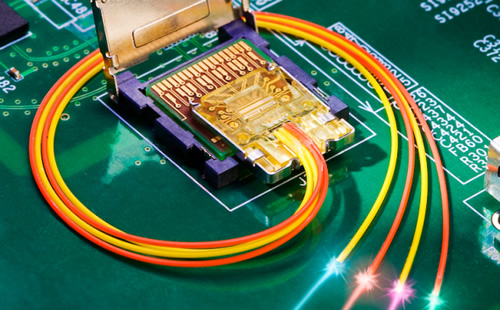Last September, Intel announced a high-speed optical cable interface for PCs called Light Peak that promised a 10Gb/s transfer rate -- or twice the speed of USB 3.0 -- with the potential ability to scale to 100Gb/s in the next ten years. The technology is being developed as a way to reduce the proliferation of ports on modern computers, and could eventually replace the plethora of interfaces currently used, from USB itself to HDMI, DisplayPort, LAN, and so on.
During a recent speech at the Intel Developer Forum in Beijing, the company shared some of its views on the upcoming Light Peak technology and insisted that there's no conflict between it and USB 3.0 -- at least not immediately. According to Intel executive Kevin Kahn, both can exist together in the market and perhaps on the same platform at the same time, as Light Peak will enable USB and other protocols to run together on a single, longer cable and at higher speeds.

A laptop with Light Peak built-in was shown off during Kahn's speech, where a single cable was used to simultaneously transmit Blu-ray video, a feed from a high-definition camera and a duplication of the laptop's display onto another screen. What's more, the Light Peak cable was plugged into the laptop through a tweaked USB 3.0 port with components added to receive the optical signal while still being able to accept normal USB 3.0 devices.
Intel argues that existing electrical cable technology is approaching limits that optical technology can surpass, so eventually they do see Light Peak replacing USB and other interface's cables/connectors altogether. The technology will reportedly become available later this year, with partners expected to start shipping compatible devices next year and an industry group is being formed to make Light Peak a standard and speed up its adoption.
https://www.techspot.com/news/38591-intel-demos-light-peak-equipped-laptop-at-idf.html